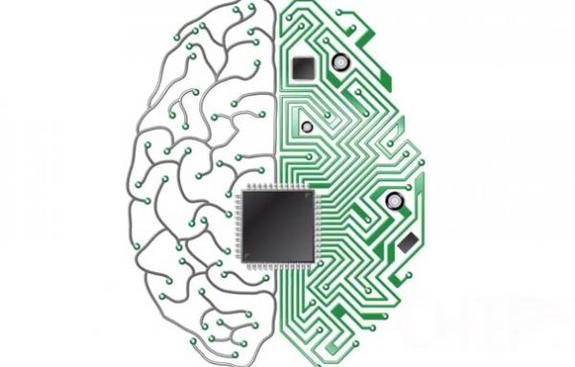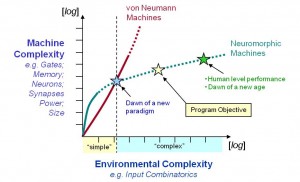December 16, 2013 – If you are familiar with the nervous system you know that it consists of masses of cells called neurons each separated by a small gap called a synapse. Electrical stimuli leap the gap when we pass along information from our brain to different parts of our body whether it be our senses or our muscles. That junction between the nerve cells is minute but plays a critical role in neuro-transmission.
But project SyNAPSE has a very different definition. Funded by DARPA, the research arm of the United States Department of Defense, SyNAPSE is about developing electronic neuromorphic computing technology that emulates our biological processes.
Considering the subject it is not surprising that SyNAPSE takes a multidisciplinary approach to the development of computers that are more human in the way they think. Unlike our computers our brains are massive parallel processors. The only time we humans lose to a computer in a game of chess occurs when many computers are strung together to think in parallel like us. Then they can approximate how we think. But in the process they eat an incredible amount of energy to accomplish what we do with less energy (20 watts) than that needed to light the interior of a refrigerator.
At project SyNAPSE the initial focus was on developing nanoscale electronic equivalents to two neurons including synapse and deploying them in microcircuitry. This has been accomplished. The next phase involves developing a complete chip set and circuitry representing hundreds of thousands of neurons. And ultimately SyNAPSE hopes to develop the architecture and tools for designers to expand on the research creating virtual environments to test neuromorphic electronic technology and systems.
The following logarithmic plot shows where SyNAPSE is attempting to go. The reference to von Neumann Machines as tracked in the red line on the graph are machines from the world of computing as we know it today – consisting of three components, a CPU, hard drive and RAM (fast accessible memory). Today the von Neumann plot (solid red) is well ahead on the development curve when compared to Neuromorphic Machines (solid green). But where the computing power of traditional computers and neuromorphic systems intersect we will begin to see the dawn of a new computing paradigm.
That achievement will give us microprocessors that can match animal brain intelligence while using the same level of power consumption as animals. The work continues. In October 2011 a prototype with 256 neurons was demonstrated. Today SyNAPSE is building a one million neuron chip with one billion synapses. The program objective although well short of achieving artificial intelligence equal to the human brain will certainly result in intelligence equivalent to that exhibited by a cat or dog.
In 2011 IBM in its Blue Gene project was able to simulate 4.5% of the human brain’s neurons and synapses, or about one billion neurons and 10 trillion synapses. The project at 512 processors simulated the brain of a mouse. At 2,048 processors that of a rat. And at 24,576 processors, that of a cat. By 2019 we should achieve 880,000 processors with 80 to 90 billion neurons, or the equivalent of our own human brain cortex.
Recently I wrote about the Human Brain Project, a European multi-nation, multi-institution research project that aims to understand and map the more than 100 billion neuronal connections responsible for what makes us human and incorporate the results into a simulation running on a supercomputer. Like SyNAPSE the goal is to create a neuromorphic computing environment that thinks the way humans do. But unlike SyNAPSE, the Human Brain Project is operating with technology that needs 9.9 million watts of power, enough to light and heat a small town.
Other neuromorphic computing projections include:
- SpiNNAker at Manchester University in the United Kingdom,
- BrainScaleS, another European project headed by Heidelberg University,
- CogniMem, a California based chip manufacturer,
- Brain Corporation, also California based,
- Neurogrid, located at Stanford University,
- BioRC, building carbon nanotube transistors at University of Southern California,
- MIT Silicon Synapse, from Massachusetts,
- Cog Ex Machina, a project out of Boston University and Hewlett Packard,
- Vicarious, a California-based software company,
- OpenCog, an open source project focused on achieving human-level AI by 2021,
- and the 2045 Initiative out of Russia which I have written about before.



![SyNAPSE2[1]](https://www.21stcentech.com/wp-content/uploads/2013/12/SyNAPSE21-300x164.jpg)

















